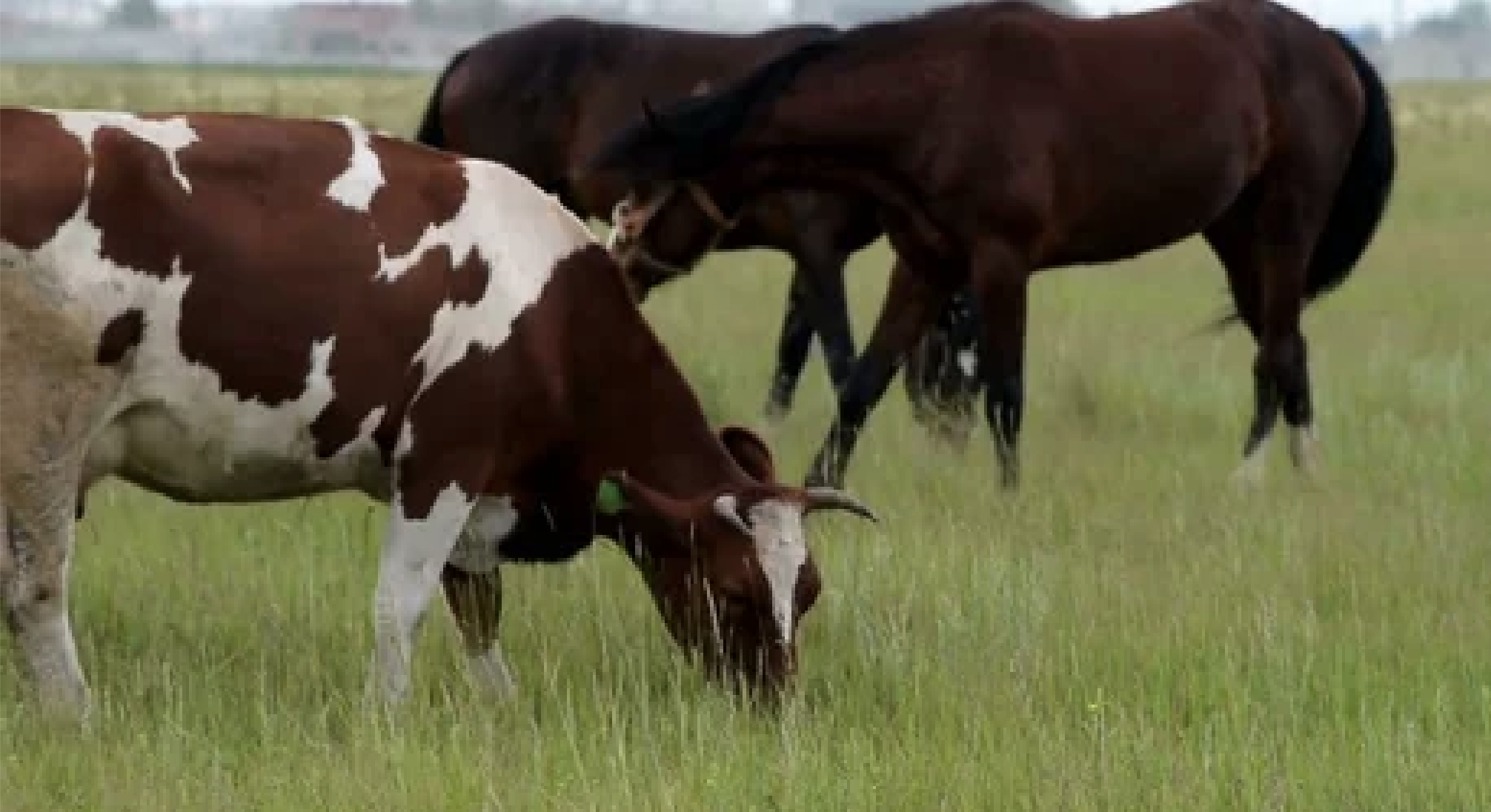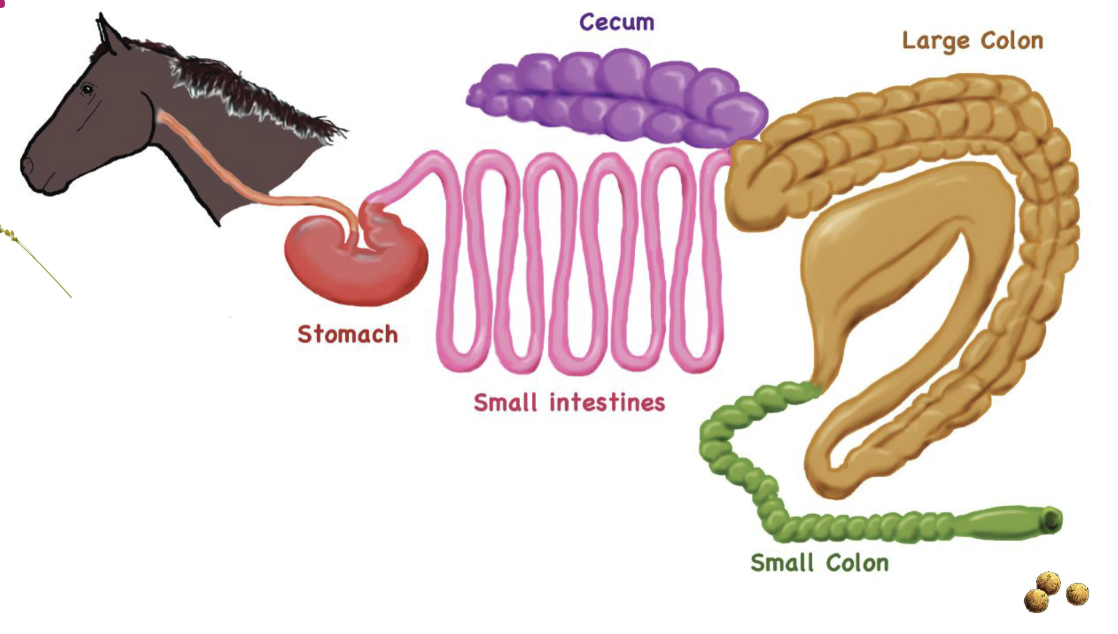79 Fore stomach, true stomach, red stomach, blue stomach
grant648; wille589; and shawx534
Introduction
Have you ever driven by a farm and seen a horse or cow munching on grass? Have you ever thought about why we can’t eat grass?

Grass can’t be digested normally because it is made up of particles that are really hard to break down in normal stomachs. If you can’t break down grass into little pieces, then your body isn’t able to receive all of the important nutrients from it. Some animals have very special parts in their digestive system that allow them to break down grass.
Learning objectives
- Identify the important GI structures in the horse
- Identify the important GI structures in the cow
- Compare and contrast the functional anatomy of the GI tract in a horse and cow
Review material
Horse Anatomy
 When a horse eats food, it moves through their esophagus to their stomach where digestive particles that break down food are secreted. Next, the food will move to the small intestine where it is further broken down. The small intestine is also an important location for nutrient absorption. After the small intestine, the food is moved to the large intestine where grasses can be fully digested and used for energy. The large intestine is made up of the cecum, colon, and rectum. The cecum is an extension off of the colon. Once food is done digesting in the large intestine, leftover food is turned into poop. Poop will pass through the rectum and then be excreted.
When a horse eats food, it moves through their esophagus to their stomach where digestive particles that break down food are secreted. Next, the food will move to the small intestine where it is further broken down. The small intestine is also an important location for nutrient absorption. After the small intestine, the food is moved to the large intestine where grasses can be fully digested and used for energy. The large intestine is made up of the cecum, colon, and rectum. The cecum is an extension off of the colon. Once food is done digesting in the large intestine, leftover food is turned into poop. Poop will pass through the rectum and then be excreted.
The cecum and the colon contain good and helpful bacteria (microbes) that allow the horse to break down the grass they ate. The colon is very long to allow the horse maximum time for their body to absorb nutrients from their food.
Cow Anatomy

When a cow eats, the food moves through their esophagus to the four chambers in their stomach, first the rumen, then the reticulum. The reticulum will spit the food back up to be chewed more and after the cow swallows the food again, it passes through the rumen and reticulum again. Then, the food goes to the omasum, then the abomasum, then to the small intestines, and then to the large intestine where the leftover food material is turned into poop.
The four-chambered stomach is made up of the rumen, reticulum, omasum, and abomasum. The rumen is large and has small organisms (microbes) that eat and break down components of the grass into molecules that can be absorbed for energy. The reticulum sorts through the particles that have been broken down. The reticulum sorts the food into two categories. It sends the smaller particles to the omasum and spits the larger particles back up so the cow can chew it again, to make sure that all of the grass has been broken down into small pieces. The omasum squeezes all the water out of the food so the body can absorb it. The rumen, reticulum, and omasum are known as the “fore stomach”. The abomasum is known as the “true stomach” because it produces the particles that break down what is leftover in the food. This includes protein, fats, and carbohydrates. This has similar functions to the stomach in the horses.
Activities
Put pictures, or names, of the GI tract in the correct order for both cows and horses.
Cows:
Horses:
Knowledge check
Match the listed functions with the appropriate anatomical structure(s) and species:
.

